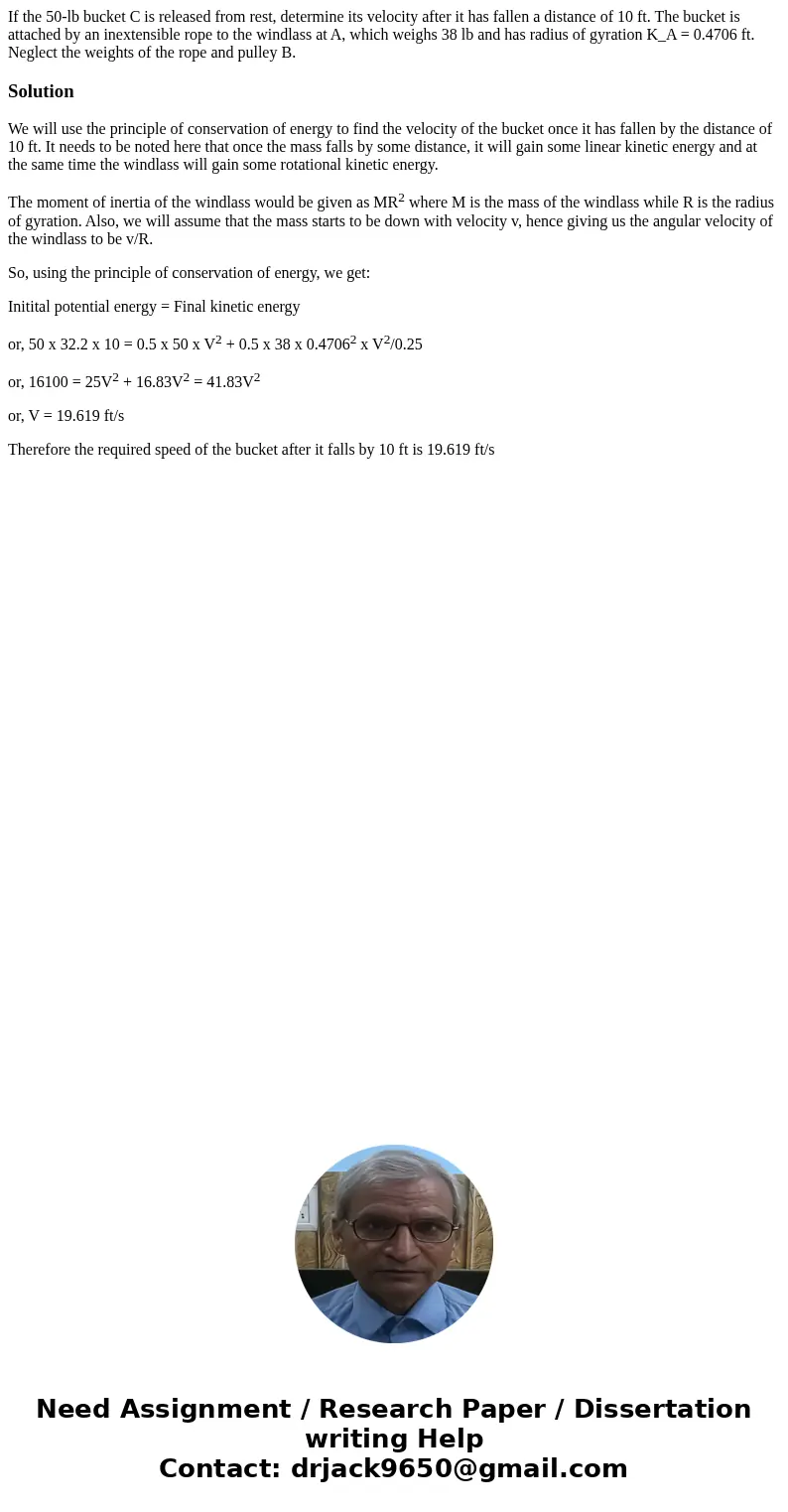If the 50lb bucket C is released from rest determine its vel
Solution
We will use the principle of conservation of energy to find the velocity of the bucket once it has fallen by the distance of 10 ft. It needs to be noted here that once the mass falls by some distance, it will gain some linear kinetic energy and at the same time the windlass will gain some rotational kinetic energy.
The moment of inertia of the windlass would be given as MR2 where M is the mass of the windlass while R is the radius of gyration. Also, we will assume that the mass starts to be down with velocity v, hence giving us the angular velocity of the windlass to be v/R.
So, using the principle of conservation of energy, we get:
Initital potential energy = Final kinetic energy
or, 50 x 32.2 x 10 = 0.5 x 50 x V2 + 0.5 x 38 x 0.47062 x V2/0.25
or, 16100 = 25V2 + 16.83V2 = 41.83V2
or, V = 19.619 ft/s
Therefore the required speed of the bucket after it falls by 10 ft is 19.619 ft/s

 Homework Sourse
Homework Sourse